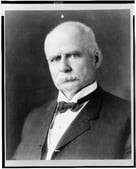Labor Day’s local roots
Insulators International Staff — Thu, Sep 3, 2015 @ 11:09 AM

With Labor Day fast approaching, students are looking forward to catching up on sleep and having an extra day off from school. However, the Blo-No community has a vast connected to the holiday’s origin.
Labor Day is celebrated on the first Monday in September to mark the creation of the labor movement and to honor American workers.
Governmental Affairs Director for the Great Plains Laborers District Council Mike Matejka explained that this message has been lost over the past few years.
“Our celebrity-driven society pays a lot of attention to athletes and millionaires, but we forget the everyday people that clean our buildings, drive our buses, fix our roads, repair our plumbing and teach our classes,” Matejka said. “They go to work every day and do their job for their family and community. Labor Day is the day that celebrates that.”
During the 1880s, there was an increase in the number of trade unions and labor movements formed, which primed the holiday’s creation.
Although there is still controversy surrounding who first proposed the idea of a Labor Day holiday, recent research supports that Matthew Maguire, a machinist, proposed the holiday in 1882, according to the United States Department of Labor website.
But before it had been signed as an official federal holiday, 30 states celebrated Labor Day.
Many other countries proposed ideas for a day recognizing workers as well. International Workers’ Day, also known as May Day, was recognized as an annual event in 1891 to commemorate the 1886 Haymarket affair in Chicago, where a peaceful rally supporting eight-hour days turned deadly.
McLean County Museum of History Executive Director Greg Koos said the United States decided not to accept May Day as a national holiday.
“We did not embrace the international day, so we created our own day,” Koos said. “We wanted to honor the working people of the United States and that they have gotten where they are because of labor unions.”
From 1893 to 1897, Adlai Stevenson I was the vice president. When he was younger, Stevenson lived in Bloomington and attended Illinois Wesleyan University.
In 1894, as President of the Senate, Stevenson signed and approved legislation to make Labor Day a national holiday, and six days later, President Grover Cleveland signed it into law.
For Matejka, Stevenson’s roots to Bloomington make this holiday that much more meaningful.
“When the Senate passed the legislation, a Bloomington resident signed the paper, which makes this holiday very significant for our community,” Matejka said.
The first Labor Day celebration in Bloomington was held in 1893. Although the parade was not held annually once Labor Day was recognized as a federal holiday, it has been a tradition since 1974.
Residents can enjoy this year’s parade at 10 a.m. on Sept. 7. This year’s theme is “For More Than Ourselves”, to emphasize community involvement and community service.